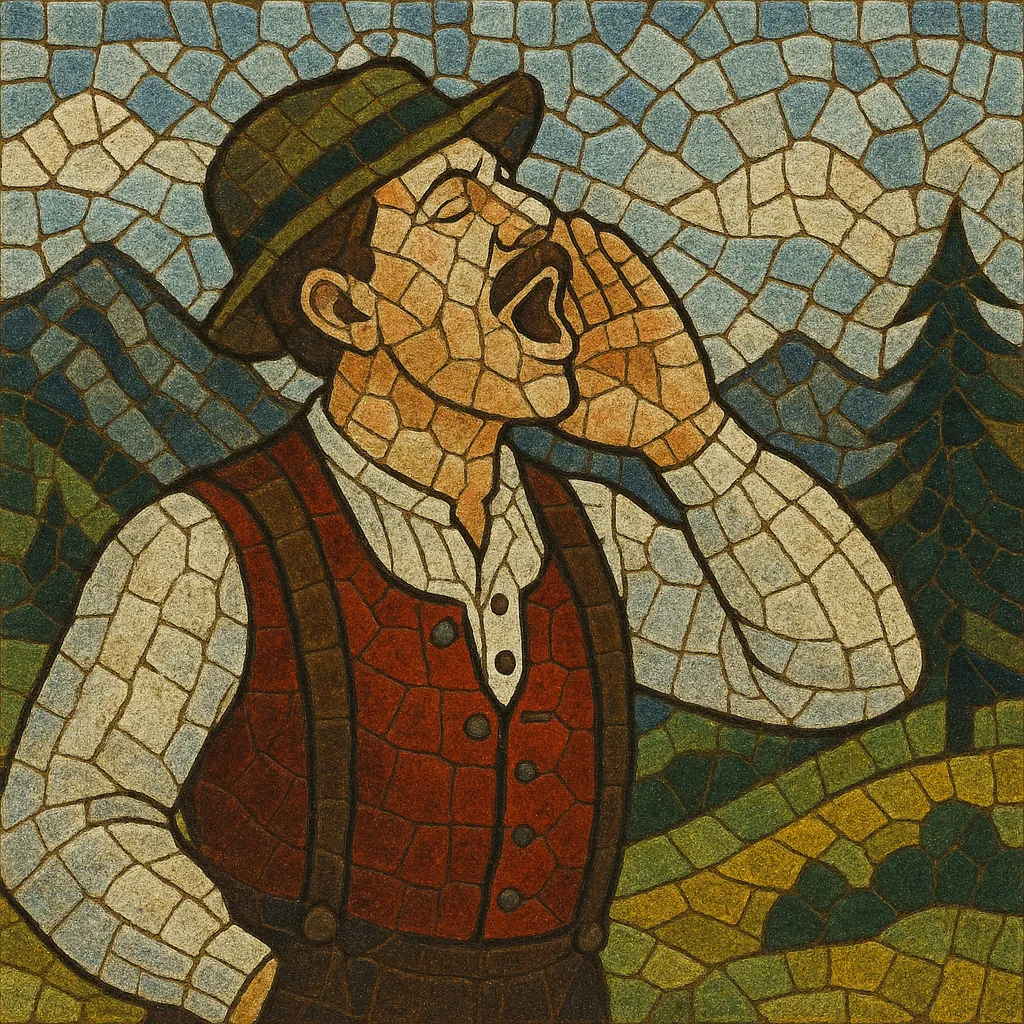Yodeling is a vocal technique characterized by rapid and deliberate shifts between chest voice and head voice (falsetto), producing dramatic octave leaps and timbral contrasts. Traditionally performed without words or with vocables (e.g., “jo-hol-di-o”), it can also appear inside fully composed songs.
Emerging in the Central European Alps, yodeling served both musical and practical purposes: herders used powerful calls to communicate across valleys, while communities embedded the sound into folk ritual and social dance. Forms range from free, long-breathed natural yodels (e.g., Appenzell’s zäuerli) to lively, rhythmic yodel-songs accompanied by accordion, zither, or guitar.
In the 20th century, yodeling crossed the Atlantic and became a signature color in early American country and cowboy music, where artists adapted Alpine techniques to English-language songs and new harmonic settings.
References to yodel-like calls in the Swiss Alps appear in early modern sources (16th century), where vocal signals (“juchzer”) helped herders communicate across long distances. Over time, these calls took musical shape within Alpine folk traditions, especially in Switzerland, Austria, and Bavaria. Distinct local forms emerged, including the free, wordless Appenzeller zäuerli (naturjodel), and more rhythmic village- and dance-oriented yodels connected to Ländler and other Alpine social music.
By the 19th century, yodeling moved from outdoor practice to organized performance, with clubs, choirs, and festivals celebrating regional vocal styles. Touring troupes popularized the sound beyond the Alps, and commercial recordings in the early 20th century fixed iconic yodel patterns—alternating chest and head voice, wide intervallic leaps, and bright, open vowels—into the public imagination.
In the United States, yodeling was adopted into hillbilly and cowboy repertoires. Jimmie Rodgers (“the Blue Yodeler”) made the technique a hallmark of early country music in the late 1920s, inspiring countless performers. Western singers and yodeling cowboys brought the sound to radio, film, and dance halls, blending Alpine mechanics with American song forms, guitars, and harmony vocals.
Today, yodeling persists both as a living Alpine folk practice (often showcased in volkstümliche musik) and as a stylistic color in popular and roots genres. Contemporary artists keep technical traditions alive while exploring new contexts—from staged choral settings and cross-genre collaborations to virtuosic solo showcases that highlight articulation, breath control, and register agility.


